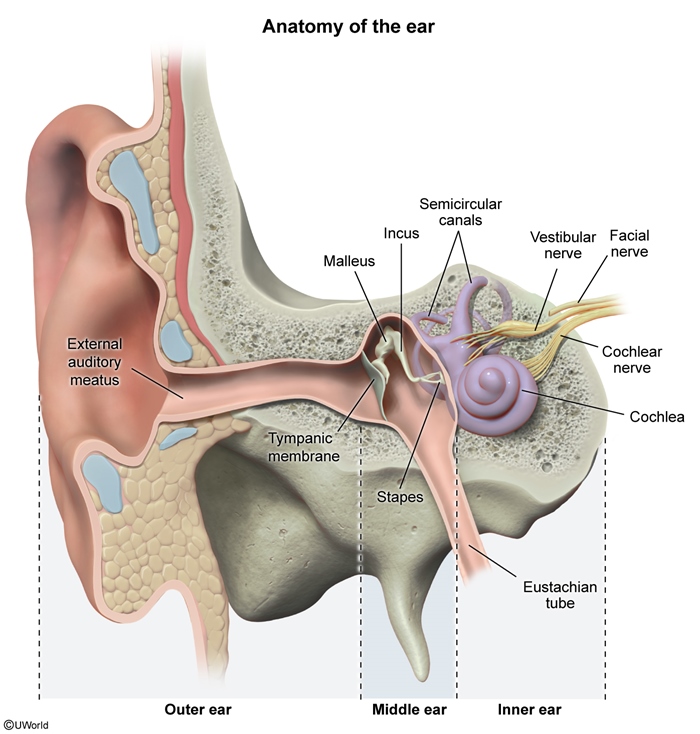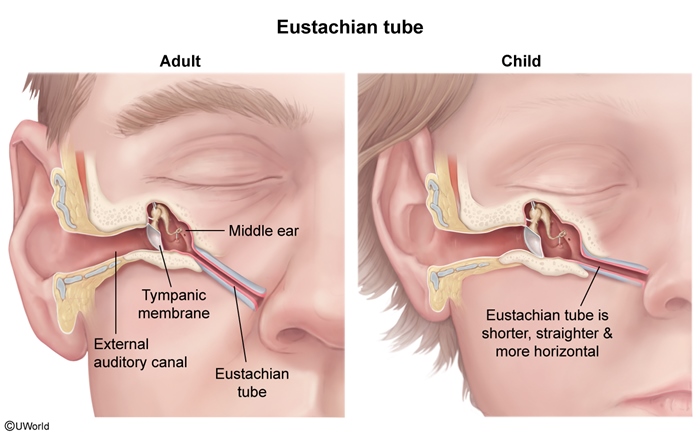Middle Ear Barotrauma
Article Sections
Introduction
Middle ear barotrauma occurs when there is a pressure imbalance between the middle ear space and the external environment. It commonly results from rapid changes in barometric pressure (eg, while diving or flying), especially when the eustachian tube is unable to effectively equalize pressure. This mismatch can cause ear pain, aural fullness, and, in severe cases, rupture of the tympanic membrane.
Pathogenesis
The gas-filled middle ear space is bordered by the tympanic membrane laterally and the eustachian tube anteromedially (Figure 1). Equal pressure between the middle ear and the external environment is essential for normal tympanic membrane vibration. The eustachian tube typically opens intermittently (eg, while swallowing, chewing gum, or yawning) to allow airflow and pressure balance.
Rapid changes in barometric pressure, particularly in the presence of eustachian tube dysfunction (eg, due to an upper respiratory infection), can impair this pressure regulation. The resulting
Continue Learning with UWorld
Get the full Middle Ear Barotrauma article plus rich visuals, real-world cases, and in-depth insights from medical experts, all available through the UWorld Medical Library.
Figures

